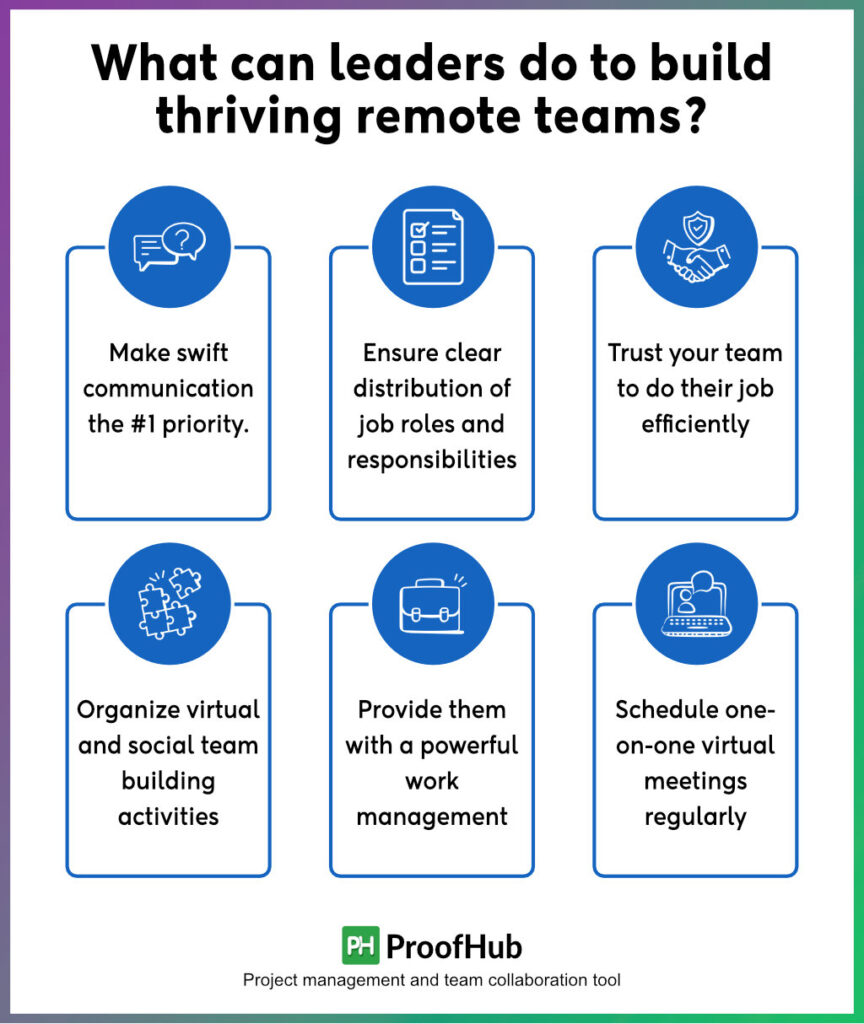Not too long ago, I used to think that remote work was nothing more than a stop-gap measure for businesses.
However, time, events, and circumstances have the power to change even the most adamant beliefs.
The manic spread of Covid-19 and enforced lockdown in various parts of the world completely changed the way businesses operate. Regular office spaces were shut down and many companies (unwillingly) shifted to remote work overnite (literally).
Ironically, a large number of organizations switching to remote work out of compulsion, are now gearing up for a long haul of remote work.
Could it be permanent? You cannot count out this possibility either because remote work has benefited both employers and employees in more ways than one.
One study done by FlexJobs and Global Workplace Analytics found that remote work has grown 91% over the past decade. Now that’s a serious number.
It’s pretty much clear that remote work is not just a passing fad. Business owners, managers, and other leaders in senior positions are now looking to craft strategies to build a thriving remote workforce for the long term.
“Let ProofHub get your remote work management act together. Join us NOW!”
How Leaders Can Build Thriving Remote Teams For The Long Term?

1. Make swift communication the #1 priority.
Ever wondered what is one of the main reasons why so many remote teams are delivering great results for their companies while others are not? It all boils down to swift, timely communication, or the lack of it. A study by Expert Market reveals that 28% of employees cite poor communication as the primary reason for not being able to complete and deliver work on time. I am sure you would not want your remote team to be counted among them!
The biggest mistake that some managers make is that they carry forward their usual communication practices from a physical office to remote working spaces. You cannot use emails or video calls all the time to communicate even small work-related things to your remote workers.
Rather, it would save a lot of valuable time if you provide communication tools to your remote workers and define which one is to be used for which purpose. Have a look at the example below to get a clear understanding of this.
- For casual talks and quick exchange of information – consider using Group Chat and Discussion boards
- For performance reviews, one-on-one and team meetings, and brainstorming sessions – consider using a video conferencing tool
- For communicating official policies and decisions – consider using email.
- For conveying information that may not be project specific – consider using announcements
2. Ensure clear distribution of job roles and responsibilities.
Remote work can easily lead to confusion and misunderstanding among remote workers regarding job roles and responsibilities. Research from Gallup found that only half of employees are clear about what’s expected of them at work. Can you imagine how things can become chaotic when managing a distributed workforce?
To bring clarity to individual and group work responsibilities, managers can use good work management and team collaboration software with inbuilt task management tools. Using this feature you can easily:
- Create tasks and subtasks
- Assign them to individuals and groups
- Prioritize them
- Set time estimates and due dates
- Create recurring tasks
- Visualize tasks to completion using workflows
“Use ProofHub to create, allocate, and monitor tasks without micromanaging. Book your demo ASAP!”
3. Trust your team to do their job efficiently
Some business owners and managers tend to become overtly concerned with their remote workers’ efficiency and productivity. So much so that they check in with remote workers individually too frequently in a day to check their work status. This unwanted habit of micromanagement becomes a daily routine and adversely affects employees’ morale and productivity.

To begin with, these things happen when there’s a lack of trust on the part of managers towards their employees. If you want your remote employees to continue to be productive and efficient consistently, you should trust them because you’ve hired them on the basis of their skills, qualifications, and progressive attitude.
Rather than checking with them too often, you can still track their progress on tasks through a project management tool. You can see the current status of tasks and check whether they are progressing as planned or not.
4. Organize virtual and social team building activities.
A study showed that 63% of leaders felt team communication and employees’ morale improved after participating in team building activities. It is a well known fact that remote workers can make employees feel isolated and left out. As a leader, it is your responsibility to keep your distributed team members engaged and connected.
Organizing virtual team building activities should be a regular feature of your scheduling calendar. You can organize it once a month or fortnight. Make sure that all team members participate in the event for higher engagement. There are so many virtual team building games you can use, both free and paid to keep your remote team connected.
Another significant advantage of organizing strategically designed virtual team building activities is that it helps to improve interpersonal communication while reinforcing a shared team identity.
5. Provide them with a powerful work management and team collaboration tool
As a responsible manager, you cannot expect your remote workers to be at their productive best consistently if you don’t provide them with the right tools and technology. Collaboration and communication are two of the biggest challenges that remote workers face. By providing your distributed team with a powerful yet easy-to-use work management and team collaboration software, you give them a common platform to work together and collaborate effectively.
ProofHub is one such tool that offers a suite of work management tools under one virtual roof for users. Without having to switch between various applications, your remote workers can use these tools to manage various aspects of work while collaborating with other team members, stakeholders, and clients.
ProofHub offers advanced remote work management features, like Request forms, Group chat, Custom fields, Task management, Time tracking, Online proofing and much more to enable users to organize their work and be more efficient minus unwanted stress.
6. Schedule one-on-one virtual meetings regularly
One of the USPs of regular, in-office work is that managers have daily in-person interactions with their team members. It enables them to have a clear idea of the general mood of their employees as they can pick up both verbal and non-verbal cues. Since remote work widens the physical gap between managers and their teams, it’s important for both to feel seen, heard, and supported.
The purpose of these meetings should be to check in with employees individually, share feedback, set goals and priorities, and lay down plans for personal growth.
Conclusion
Remote work is not going anywhere. During the last couple of years, it has changed the way the management and employees approach their work. Benefits of remote work aside, there are certain challenges that can hamper the productivity and morale of your distributed workforce.
Therefore, it’s important for managers to keep all remote team members on a common platform for enhanced collaboration, engagement, and communication. ProofHub, a powerful work management and team collaboration software, can help you efficiently organize your work and remote team through a suite of features under one virtual roof.
Why use multiple tools when one powerful application is enough? Sign up and get going!

